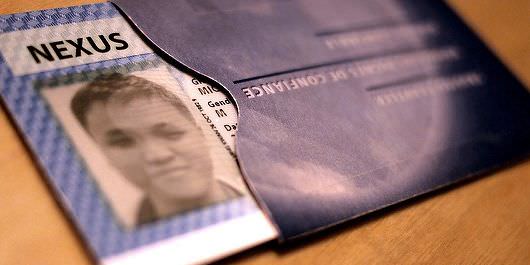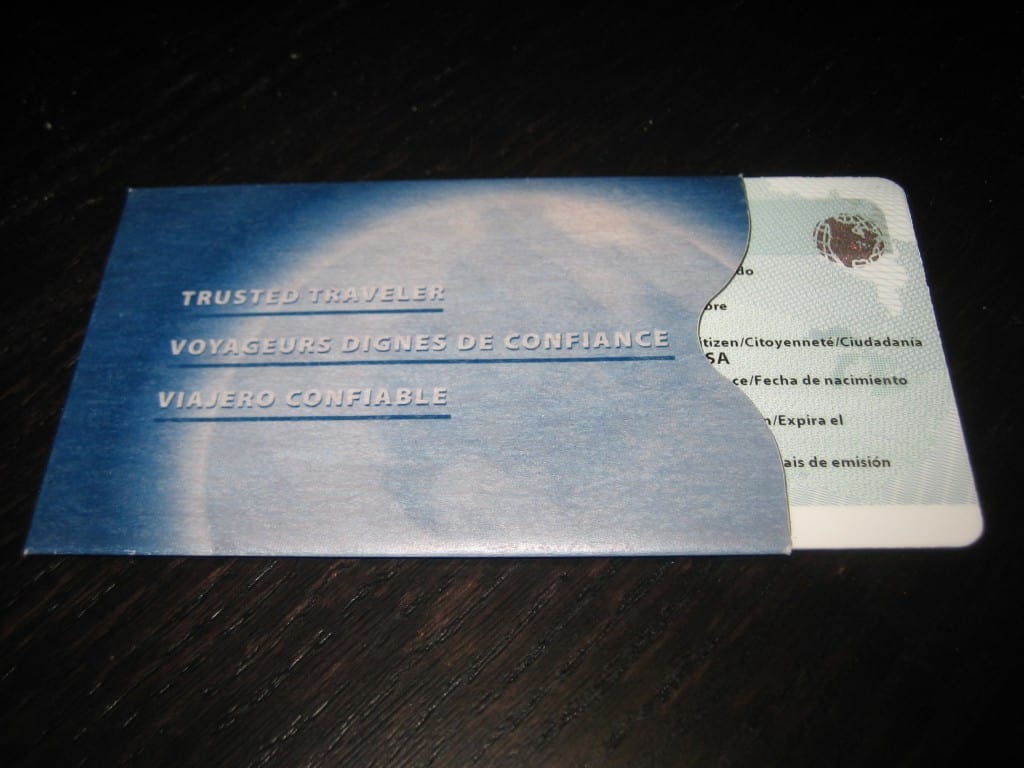Air travel has gotten more and more complicated over the past decide with border crossings clamping down when it comes to customs and airport security. As a traveller, we dread having to speak to a customs officer and can really put a damper on your vacation if you’re pulled aside or questioned in-depth. Just thinking about even the light interrogation gives me stress.
If you can believe it, there’s a solution for this if you’re from Canada. If you’re from the USA and you travel to Canada frequently, this could be for you as well. Even if you’re not a frequent traveller, there’s an argument for why the NEXUS card is worth it. Let’s dive into what makes this card a must-have.
Read more travel tips
- Can you use your Nexus card when returning from an international flight?
- Entering China without a Visa using the 144-hour in-transit Visa
- What are those CLEAR kiosks you see in the US?
How to find the best travel deals?
- Hottest deals – Bookmark the frequently updated travel deals page.
- Car rentals – Save the most money through car rental coupon codes.
- Hotels – Use corporate codes or get Genius 2 tier with Booking.
- Flights – Have you ever heard of the “Everywhere” feature?
- Insurance – Make sure you’re covered for all of your adventure activities with the best travel insurance.
Table of Contents
Looking for something specific to learn about CLEAR? Jump to what you want to read.
In This Article
So what exactly is the NEXUS card?

NEXUS is designed to expedite the border clearance process for low-risk, pre-approved travellers into Canada and the United States.” This is a trusted traveller program that has a lot of similarities to the American programs, Global Entry and TSA Pre✓.
This is essentially a reciprocal agreement between Canada and the US that allows pre-cleared Canadians to cross borders at ease whether by air, land, or sea. Vice versa, Americans can use this well in the other direction.
By being enrolled in Nexus, you are automatically part of Global Entry and TSA Pre.
Air crossings
Departing Canada
There are two scenarios here for Canadians. When flying to the US from Canada, customs clearance usually occurs on the Canadian side. If this is the case, there will be NEXUS/Global Entry kiosks available where you’ll need to do a finger print scan, take a photo, answer the general questions, and take the slip over to the officer. Custom officers won’t ask any questions unless you are flagged.
Arriving in Canada
When arriving into Canada, you can bypass the standard machines or border officers by going straight to the self-serve NEXUS kiosks. These are a little different from the Global Entry ones. Here, you’ll do an iris scan, answer the general questions, and take your printed slip to hand over to the officer. Again, no questions are asked by an officer unless you are flagged.
Land crossings
When crossing the border by car, you’ll be able to leverage the special NEXUS line. When you arrive at the gate, you’ll be prompted to pull out your NEXUS Card in front of the RFID reader. You will then proceed to speak to an officer who will ask you a few basic questions and typically wave you through quickly.
Marine crossings
I have not done this personally but according to the CBSA there’s a call-ahead system in place if you’re crossing the border via water. The number to call is 1 866-99-NEXUS (1-866-996-3987) and notice needs to be given between 30 minutes to 4 hours ahead of crossing.
For a list of airports that have kiosks available for either Global Entry or NEXUS, make sure you head to the NEXUS wiki.
6 reasons why it’s worth it to get a NEXUS card

If I haven’t convinced you yet, here are my 6 best reasons why you should get the NEXUS card ASAP.
- So affordable – It’s only $50 and is valid for 5 years. That means it’s $10 a year . Every time I tell someone this, they’re so surprised. Yes it’s that cheap!
- Faster lines – Especially with my experience from Toronto Pearson International Airport, you’re talking about faster security screening and customs whether I’m leaving or coming back home. Especially during high traffic times at the airport, this means I’m laughing my way through.
- No questions – Possibly the worst part of flying when you get nervous for no reason. With NEXUS, you barely ever have to speak to customs unless you’ve been randomly selected by the machine. Win!
- NEXUS by car is a breeze too – I’ve done the crossing to Buffalo, NY and to Blaine, WA and the NEXUS line is seldom used.
- Not limited to North American travel – As I learned from my post about this new discovery, you can use NEXUS when arriving back in Canada even from International destinations.
- Don’t need to fill out any forms – When coming back home to Canada, you don’t need to fill out those customs forms that you used to have to fill out. Wave the flight attendant off and go straight to the NEXUS machines when you land.
How to get a NEXUS card
If there’s one major con to the NEXUS card, it’s the application process as you’ll see with the steps numbered out. The main bottle neck is the interviews and talking to US border officials isn’t exactly a fun past-time.
So here’s how it works:
- Figure out if you’re eligible – Most of you will be and this involves the basics such as whether you’re able to travel to the other country (Canada/US). You also either need to be a citizen or as a legal resident of either country for a minimum of 3 years
- Get your documents ready – You need to bring a proof of Canadian or US citizenship. The NEXUS application page has the options.
- Fill out the application – You can do this online or by paper. This will take you to the Trusted Travelers Program page.
- Pay – If you fill out the paper form and mail it in to the Canadian office, you can pay $50 CAD. If you put in your application online, since you’ll be using the US system, you will have to pay $50 USD.
- Schedule and take interview – If conditionally approved, you’ll be given the option to book an appointment at a NEXUS Enrolment Centre. This is the most challenging part because of how competitive this is. If you’re hoping to get an appointment at a major hub (i.e. YYZ), you’ll be looking months out for an appointment. The trick is to look at small border crossing. During the meeting, they’ll be asking you questions about your reasons for needing the card and type of travel you do. You’ll be asked about your work as well. Lastly, a photo of you, retina and fingerprints will be taken.
What you might not have known about your NEXUS card
- What you need to do to get TSA-Pre on your boarding card – When you’re checking in, make sure to fill in the Known Traveler Number field which you’ve probably always left blank. This spot is for your NEXUS number. This matters most when you’re flying outbound from the USA since TSA Pre is dependent on this.
- Declaring honestly – The second con to the program is that it’s not a program you want to be blacklisted from. As a result, when it comes to declarations, you want to be very careful. The category that officers aren’t consistent on is the food category. It’s never really clear whether things like granola bars and chips need to be declared but some are adamant that these count. As a result, if you want to be by-the-book, you need to check off that you’re bringing in food to the country which would result in automatic secondary. That said, at most airports, when they see the designation on the printout and you tell them straight away that you’re just declaring snacks, they usually stamp you through.
Getting a free NEXUS Card
Wait I just said that NEXUS is $50 right? Well that is true but there is a new Canadian credit card that can turn it free.
CIBC’s Aventura Visa Infinite card has a pretty sweet perk where every 4 years, you’re eligible to apply for a rebate on the NEXUS application fee.

Tip: When ready to apply or re-apply for NEXUS, make sure to sign up for the Aventura right before so you can get that $50 right back.
Frequently Asked Questions
So far you’ve written from a Canadian perspective. Why would an American want NEXUS? – That’s a great question. So far, I’ve made it sound like Americans don’t need NEXUS because you’ve got Global Entry and TSA Pre. That is partially true except this caveat – Global Entry works for travel back into the USA but does not work for travel into Canada. That said, NEXUS does work both ways and in that way is a superior card and on top of that requires $50 for registration vs Global Entry which is $100.
How does the renewal process work? – I’ve gone through renewal twice and in the latest iteration, the US system has been updated from GOES to the new Customs and Border Protection (CBP) website. In the past, you used to be able to renew your card online and they’d just send you a new card. The new process is more rigorous and as if you’re applying for the first time. You have to go for an interview all over again to renew.
So what are you waiting for? It’s time to get one!
What you should read next
Travel Resources For Your Next Trip
If you’re in the process of planning your trip and putting together your itinerary, these are genuinely the best resources that the Going Awesome Places team stands by 100%.
Credit cards: Don’t get burned by hidden fees on top of terrible exchange rates. When we travel now, we use the Wise Card. Simply load it with the currency you need before you go and use it as a regular VISA or their digital wallet card. Use their free app to track how much you have and top up when you need to.
Flights: Of all the booking search engines, Skyscanner is the most helpful and easy to use thanks to their Everywhere feature. Kayak is also another that’s we will often check as well.
Car Rental: If you’re looking to save money, these car rental coupon codes will be a true game-changer. Otherwise, DiscoverCars and RentalCars are great places to start.
Airport Parking: You’ll need a spot to leave your car at the airport so why not book a spot at a discount. Use code AWESOME7 to get at least $5 off at Airport Parking Reservations or Park Sleep Fly packages.
Data: We’ve been a huge fan of wifi hotspot devices like PokeFi because their rates are so good and you can use it globally but recently, we’ve really loved using eSIMs. The best one is Airalo. Save money by getting region-specific eSIMs and use referral code WILLIA9500 to get $3 USD credit on your first purchase. Ubigi is another one that we’ve had success with where they uniquely offer 5G coverage. Use code AWESOME10 to save 10% on your first order.
Hotels: Our go-to is Booking.com because they have the best inventory of properties including hotels and B&Bs plus they have their Genius tier discounts. The exception is Asia where Agoda always has the best prices. TripAdvisor is also useful for reviews and bookings.
Vacation Rentals: Your first instinct will be to check Airbnb but we always recommend checking VRBO as well if you’re looking for a vacation rental.
Tours: When planning our trips, we always check both Viator and GetYourGuide to at least see what’s out there in the destination that we’re going to. They often have different offerings and prices so check both.
Travel Insurance: Learn how to buy the best travel insurance for you. This isn’t something you want to travel without.
- Insured Nomads – Popular insurance provider for frequent travelers and comes with great coverage and special perks.
- RATESDOTCA – Search engine Canadians looking for the cheapest insurance including multi-trip annual policies.
- SafetyWing – A perfect fit for long-term nomads.
- Medjet – Global air medical transportation.
- InsureMyTrip – Best for seniors, families, and those with pre-existing conditions.
If you need more help planning your trip, make sure to check out our Travel Toolbox where we highlight all of the gear, resources, and tools we use when traveling.
